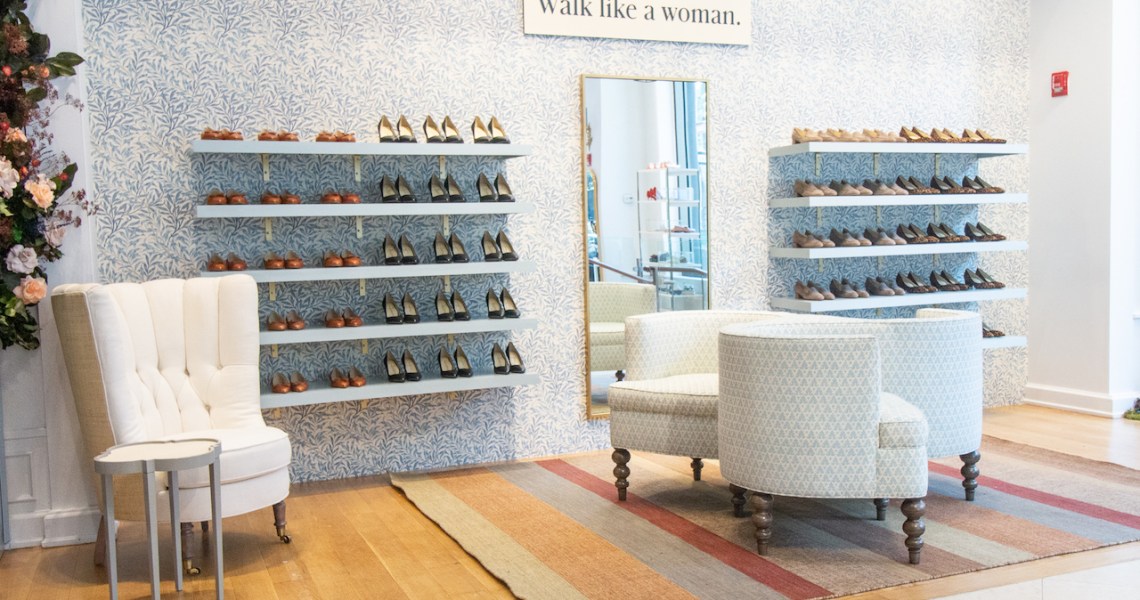When physical retail shut down earlier this year, pop-ups went with it. Running a temporary retail store, which has become a popular experiment, especially for DTC brands looking to test the waters of brick-and-mortar, became impossible. And now, as the U.S. market slowly eases into reopening, the pop-up is transforming.
According to Melissa Gonzalez, CEO of the Lionesque Group, more brands that are struggling to come up with a solid plan for retail are using pop-ups as a data-gathering tool for testing and iterating on ideas like curbside pickup and modified fitting rooms before committing to them.
“Right now, brands and retailers are trying to wrap their heads around consumer behavior,” Gonzalez said. “So many things are changing, and they realize they have to iterate to figure out how to adapt. Things like contactless payment: Will 50% of customers use contactless payments? Or closer to 100%? How much should they invest in that infrastructure? How does that affect checkout? And should we have fitting rooms? Pop-ups are going to become, even more than they already are, a way to test things like that.”
Deirdre Quinn of Lafayette 148 told Glossy in May that the retailer is planning on using pop-ups to do promotions, to keep heavy mark-downs off the main site. At the end of June, DTC brand Threads & Company hosted a pop-up entirely outdoors in a parking lot, with racks of clothes rolled out each day and placed back in storage after the pop-up closed.
Gonzalez said she’s seen brands using pop-ups to test out new store formats and business models, as well as different safety precautions like plexiglass barriers in places still hit hard by coronavirus
Brands like Mark Cross are finding other novel uses for pop-up shops. Ulrik Garde Due, CEO of Mark Cross, said that the company has been using pop-ups to develop and solidify relationships with wholesalers, particularly in China with stores like Lane Crawford. It’s also a way to test the brand taking more direct control of its messaging in the region.
“We built our World of Mark Cross pop-up [which opens on July 24] in Hong Kong and mainland China ourselves, but we’re doing it in collaboration with some of our newer partners [like Lane Crawford]. We’ve been building elements of social media storytelling and Instagram directly into it. It’s a good way for us to tighten those relationships with the wholesalers we have while having fewer wholesale accounts overall.”
Ad position: web_incontent_pos1
Hatch, a DTC maternity brand which has stores in New York City and Los Angeles, is using a pop-up to test out a new geographic market: the Hamptons. Founder Ariane Goldman said that she had always thought the Hamptons would be a good place for her brand, but the rent seemed too high to justify a permanent store. Now, she’s using a pop-up to test not only whether the Hamptons is a good area for the brand, but also new store formats, like a fulfillment center model that focuses only on curbside pickup.
Goldman said her pop-up is curbside pick-up only for its duration, a format she’s never tried before but one that could be a cheaper and safer way to have a retail presence in a new market. The pop-up is housed inside The Westside, a boutique in Southampton.
“People are calling in advance, and we have their stuff ready to give to them as soon as they get there,” Goldman said. “There’s not a surge of crowds coming to our stores [which reopened this week], but there’s a lot of action happening in the Hamptons market, so it’s good for us to be there.”
Pop-ups like Hatch’s can also be a way brands follow their customers, in the event of immediate mass migration, like the large flock of high value customers who fled to the Hamptons in the last few months.
Gonzalez pointed out several other noteworthy examples of brands using pop-ups to bolster their presence in an area of stronger business, including Bottega Veneta’s innovative Invisible Store pop-up in China which opened on July 1. The pop-up, situated in Plaza 66 in Shanghai, is made entirely of mirrored surfaces with little outward branding. It’s an effort to keep up the momentum of Bottega Veneta, one of the few Kering brands whose earnings actually grew during the pandemic, in the high value market of China.
Ad position: web_incontent_pos2
Some brands are using the term pop-up so loosely that it’s stretching the definition of what a pop-up even is. Ted Baker, another luxury brand, used this moment to test out its first digital pop-up — essentially a separate digital storefront on its site used for a variety of promotions — in April. Baker, in a statement, said the brand would make a digital pop-up a recurring thing, giving portions of its proceeds to different charities each time.
“Every brand needs to be more agile around retail right now,” Gonzalez said. “They need to be agile and they need to be able to iterate fast. Pop-ups have always been good for brand awareness and product launches, but now they’re being used for a lot more.”


